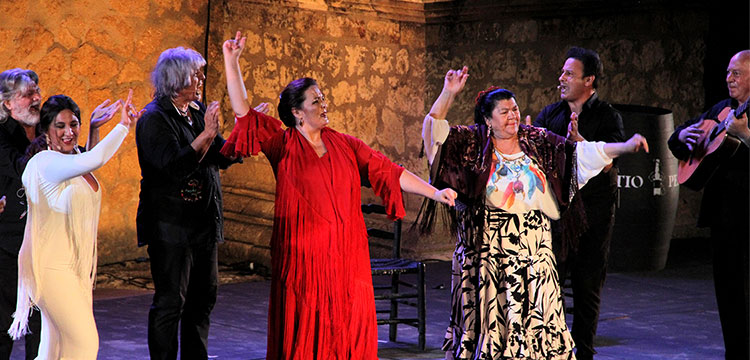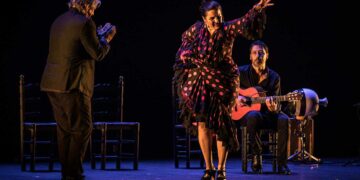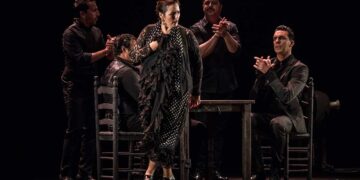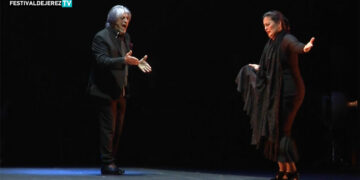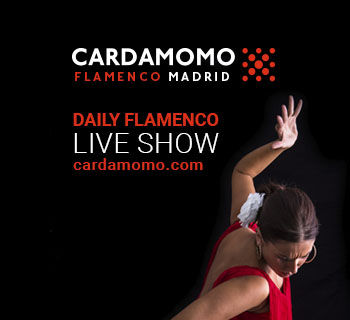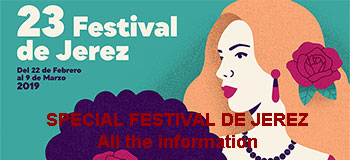Jerez Puro Esencia. Dance, choreographer and director: María del Mar Moreno. Vocals and artistic director: Antonio de la Malena. Vocal: Antonio Peña Carpio ‘El Tolo’ and Lela Soto. Guitar and music: Santiago Moreno and Domingo Rubichi. Rhythm: Ale de Gitanería, Javi Peña and el Bo. Guest artist: Tía Yoya Series: Flamenco Patrimonio. Teatro Romano de Itálica. July 18th, 2018. Half-full house.
Text: Sara Arguijo
The essence of flamenco in Jerez is perceived in the smallest gestures. In the tortuous delivery of the singing, in that guitar-playing full of aromas, in the cheering that comes from life experiences, in the rhythm of knuckles on a barrel of local wine, in the little bulerías dances that end most shows and say so much with so little. Each second of El Bo is worth a fortune!, the short movements, the sudden stops. In the universe that María del Mar Moreno hides beneath her ruffles and has been spreading for nearly 15 years all over the world with her show Jerez Puro Esencia that this Wednesday was presented at the Teatro Romano de Itálica.
A solid formation which from the outset had the goal of transmitting the richness of a multicolored heritage in which Chacón and Torre share the space, “and both are on top”, says the dancer energetically breaking onto the scene in one of the pieces – la Paquera, Tío José de Paula or any of the interpreters from the family dynasties that seem endless. Also revealing her relevance and showing how the legacy is perpetuated in new generations that the dancer incorporates into the group and which on this occasion was represented by the warm promising voice of Lela Soto for example.
Jerez Puro Esencia is an ode to classic flamenco that is able to fill a huge stage with some hand-clapping and footwork, making it momentarily seem as though the area was full of three thousand and not three people. In this way, like the sheltering matriarch who enables everything, María del Mar Moreno came off as splendid and generous, triggering oles with her powerful and infallible feet, at the same time that Malena enveloped her with his very flamenco sounding voice.
In this sense, you saw what was to be expected of this particular artist. And if anything was out of place, it was the lack of connection between the work and the venue. On the one hand, because María del Mar’s dancing is epicentric, static, nearly immobile, not spatial at all, and on the other, because the show was conceived for a closed theater and this stage beneath the stars was a monotonous backdrop that was actually annoying due to the continuous comings and goings of the performers, and not taking advantage of the setting.
Even so, as we said, the dancer emptied out her emotions to the distant audience. And everyone, from the youngest to the oldest, filled this Teatro Romano with their essences. Although we all know that Jerez is best savored in short distances.
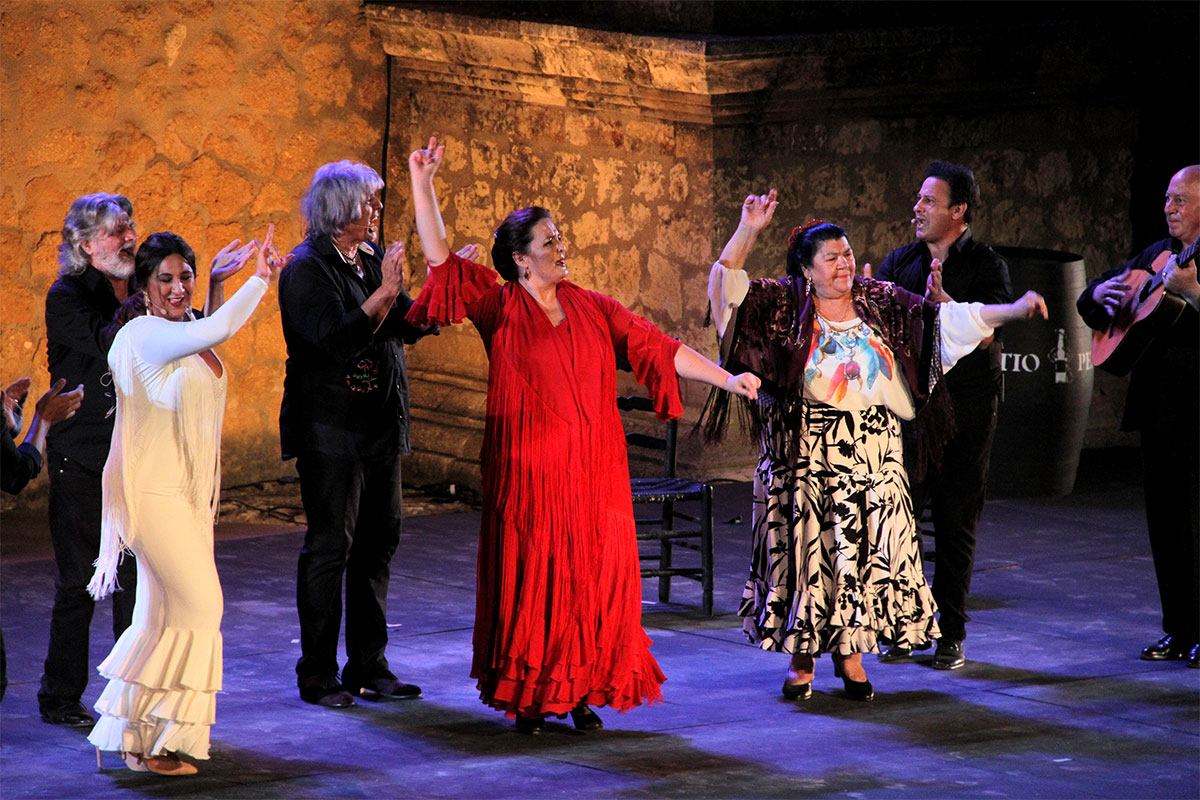
Discover more from Revista DeFlamenco.com
Subscribe to get the latest posts sent to your email.


